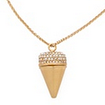
The “Manic Pixie Dream Girl” is dead. She was 6 years old. Critics had been predicting her demise for a while now, but this week’s “Modern Love” column, a classic tale of boy meets MPDG, feels like the nail in the coffin — and not just because once the Times “Style” section gets to something, it’s so over. As a critical term, MPDG has lost all meaning. As a personality type, the MPDG has been debunked, notably now by the kind of male screenwriter who was responsible for her proliferation.
The MPDG was born in 2007, in AV Club film critic Nathan Rabin’s review of Cameron Crowe’s Elizabethtown. (Surely he deserves some kind of not-yet-invented journalism award for stickiest critical coinages.) Bemoaning Kirsten Dunst’s role, Rabin wrote that her character, an archetype he called the Manic Pixie Dream Girl, “exists solely in the fevered imaginations of sensitive writer-directors to teach broodingly soulful young men to embrace life and its infinite mysteries and adventures.” For a while, MPDG was shorthand for a feminist critique of a certain kind of female character (Natalie Portman in Garden State, Zooey Deschanel in (500) Days of Summer) who was less a person than a symptom of the superficiality or laziness of her male creators.
It was as if whoever wrote MPDG characters didn’t feel the need to imbue women with personalities (beyond their taste in music and vintage clothing) or motivations (hence their spontaneity and availability). Or so actress and writer Zoe Kazan tried to explain when reporters asked whether she portrayed a Manic Pixie Dream Girl in Ruby Sparks, the movie she, a woman, wrote about a Pygmalion-esque writer-man who has MPDG problems. Well, yes, and no.
By then, the term MPDG had lost most of its usefulness anyway, thanks to overuse. It was levied, criminally, at Diane Keaton in Annie Hall and Zooey Deschanel, the actual person. How could a real person’s defining trait be a lack of interior life? I wondered. But then came the essays from women who claimed to be or to have been Manic Pixie Dream Girls, citing their love of cute stuff. Some were hand-wringing. “I shouldn’t have to feel embarrassed when a group of lady friends makes fun of my kitten-covered day planner, but I still do,” wrote a woman with a Hello Kitty credit card. Others were defiant. “Just because I like cute stuff doesn’t mean I’m shallow,” wrote a young woman who aspired to work at a bakery for the aprons.
For at least one woman, the idea of the MPDG was central to a feminist awakening. “Women behave in ways that they find sanctioned in stories written by men who know better,” observed political writer Laurie Penny, who has a pixie haircut (sometimes red) and plays the ukulele. For her, recognizing her MPDG-ish tendencies inspired her to prioritize her own life and work over the offbeat happiness she brought to men. “Something in me was rebelling against the idea of being a character in somebody else’s story,” she wrote in the New Statesman. “I wanted to write my own.”
Maybe the term could be resurrected if a rash of woman-produced media introduced an array of peripheral, quirky Manic Pixie Dream Boys. But for me, the Manic Pixie Dream Girl completed her life cycle when a male filmmaker realized that his own, real-life MPDG was more complicated than the girls in the movies that he watched and wrote, movies which in turn inspired women to think of themselves as MPDGs. The tattooed, vaguely ethnic, vintage-typewriter-collecting “human V.I.P. pass” he met in an improv class, he realized, “wasn’t a character or plot device in my story, or some damaged creature with deep despair that I and only I could cure as part of my ‘hero’s journey.’” “She was simply someone who had fallen out of love with her boyfriend,” he wrote. “Which happens.”








